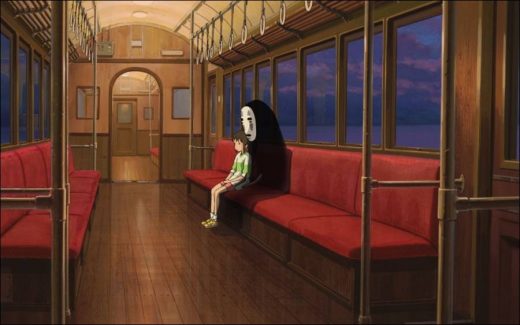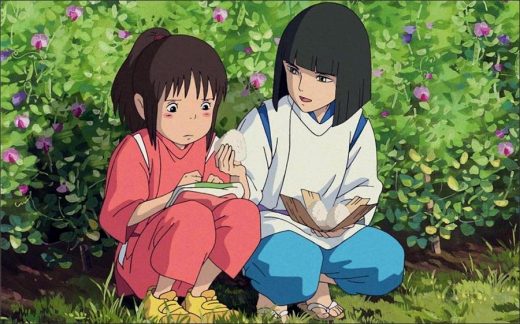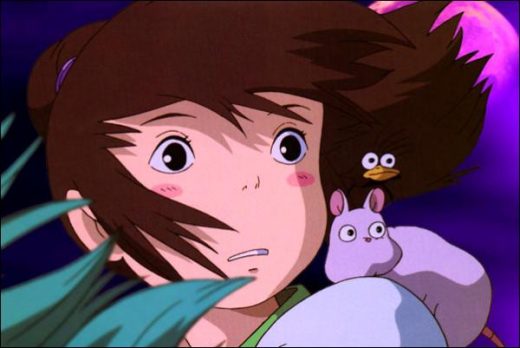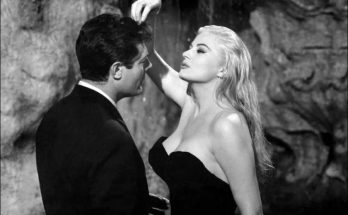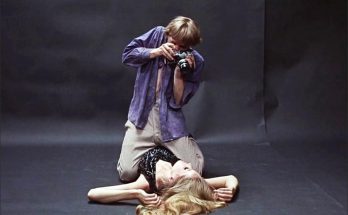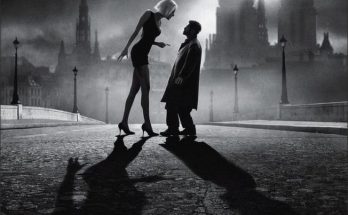“Once you’ve met someone, you’ll never forget him completely. Sometimes it just takes a while for memories to come back, that’s all..”
Anti-capitalist approach in Japanese animation art. When the sun goes sets and turns off the amusement park lights, get your souls ready to bathe in Yubaba’s night bath: there is a train ticket from Miyazaki to the spirits table. When you get there, you will see two options, either turn into a pig with greed or break the fate of your pawn in the capitalist order of Yubaba.
These are perhaps ambitious words for the adventure of saving a little girl’s family. Spirited Away (2001), which achieved the highest box office revenue in Japan with a gain of 30.8 billion yen, continues to be talked about with its negative criticism that it contains too scary characters and confuses for “a cartoon that appeals to children”. It is.
At this point, it is useful to correct a misunderstanding. This story, in which train journeys are made on the sea, Noh mask wanders, and 8 million Shinto souls come together, is far beyond a child-oriented cartoon revolving around a single event. When you watch Spirited Away, which scratched Yubaba’s face in the 2000s, years later, it is almost impossible not to get new and different tastes from the details of the film combined with Japanese mythology.
Spirited Away, which brought the director Hayao Miyazaki an Oscar for the “Golden Bear” and “Best Animation”, is a layered fiction inspired by the religious belief of the Japanese, Shinto. According to Shinto, everything visible or invisible has a soul. Throughout the film, which basically emphasizes this belief, we witness that all the souls that symbolize living or inanimate objects in the world come to rest in the night baths, which are eye-catching with the luxurious services of Yubaba.
A bath of spirits where the one with money gets better service; From the hierarchical floor arrangement to the emphasis of the worker-boss, the owner of the bath who steals the name and therefore the identity of his employees, he clearly reveals the capital order in every detail from the owner of the bathhouse to charcoal-bearing charcoal and child workers.
It is probably much more than a coincidence that the place where the story takes place, especially as a bathhouse. Mentioning the order of the world, the universal mistakes and the murder of nature in his films, it is possible that Miyazaki chose to embroider the theme of “cleansing the spirits” in Spirited Away with the irony of “the real cleansing of the spirits” in a land that goes beyond the limits of imagination. The fact that the River God, which has turned into a giant mud because it has been polluted and has become a pile of dirt that nobody can bear, can be interpreted as one of the attributes that Miyazaki is disconnected from nature and nature.
In the adventure described, Chihiro, who meets tragic elements in a normal way, reaches the ultimate happiness as a result of the development of characters evolved from a cowardly girl to a brave hero, bringing to mind old age legends and mythological stories. While the pure honesty and courage of Chihiro resembles Greek mythology, deformed beings and human-animal transformations evoke Japanese mythology.
In the film, where each character glorifies a hidden social identity, cultural and political order implications are also among the themes that attract attention. A spider-like character, the boiler master Kamaji symbolizes the working class with his anxious and ready-to-rebel attitudes, while continuing a routine he works with eight arms in order to fulfill the demands in the current order. In addition, the fact that black color was preferred in the drawing of the charcoal draws attention to a racial detail.
At the opposite pole of the working class, there is Yubaba, who counts money in the luxury apartment close to the sky, who makes his employees forget their names with magic, thus gathering everyone under a “single” order appropriate to their authority, and have the authority to transform and eat what they want to punish. The fact that Yubaba has a more compassionate and kindhearted twin named Zaniba, while emphasizing the line between good and evil, also emphasizes the philosophy that every villain can exist with a goodness, in contrast with everything.
Yubaba explains that turning the people who have fallen to the baths into pigs as “punishing greed”, but the extreme dimensions and demanding attitudes of her and her baby support the contrasting pattern of capitalism. Throughout the movie, we think that Yubaba’s only asset is Boh, her baby, but when Boh changes shape, Yubaba doesn’t even know him. Explaining that there is no place for real emotions in the material world with the mother-child relationship, Miyazaki also winkes to the inevitable realities of “advanced” societies with Yubaba.
The mysterious No Face character, which we don’t know where he came from and where he wanted to go, is one of the deepest lines of the movie. No Face, which combines loneliness, loneliness, and communication with a ghost image, has a different feeling compared to all characters. Wandering around as a calm, quiet, faint ghost, this soul cannot even communicate with its surroundings without swallowing any of them and having its voice.
From such a profile, with the money transforming into an ego ball trying to buy happiness and love, we have the chance to observe a great character evolution in his scenes as in Chihiro. Carrying the traces of Japanese culture to a large extent, No Face not only refers to the Japanese theater and various manga with the Noh mask on its face, but also makes sensitive references to the most primitive feelings of humanity such as loneliness and ambition.
One of the features that makes Spirited Away attractive is the fact that a very possible love theme – despite all its availability – is not brought to the fore in order to attract attention easily. Long before meeting Haku with Chihiro in the bath of Yubaba, the moments of meeting in the river where Chihiro had fallen as a child remained an innocent souvenir, not returning to a big love story later in the film. While this acquaintance helps Haku get rid of the realm remembered by remembering his real name and identity, he completes his own mission and illuminates the way for the house for everyone.
All about Spirited Away movie.
Spirited Away (2002)
Directed by: Hayao Miyazaki
Starring: Daveigh Chase, Suzanne Pleshette, Miyu Irino, Takashi Naitô, Yasuko Sawaguchi, Tatsuya Gashûin, Ryûnosuke Kamiki, Yumi Tamai, Koba Hayashi, Bunta Sugawara
Screenplay by: Hayao Miyazaki
Production Design by: Norobu Yoshida
Cinematography by: Atsushi Okui
Film Editing by: Takeshi Seyama
Art Direction by: Yôji Takeshige
Music by: Joe Hisaishi
MPAA Rating: PG for some scary moments.
Distributed by: Toho (Japan), Buena Vista Pictures (United States)
Release Date: September 20, 2002
Visits: 76
